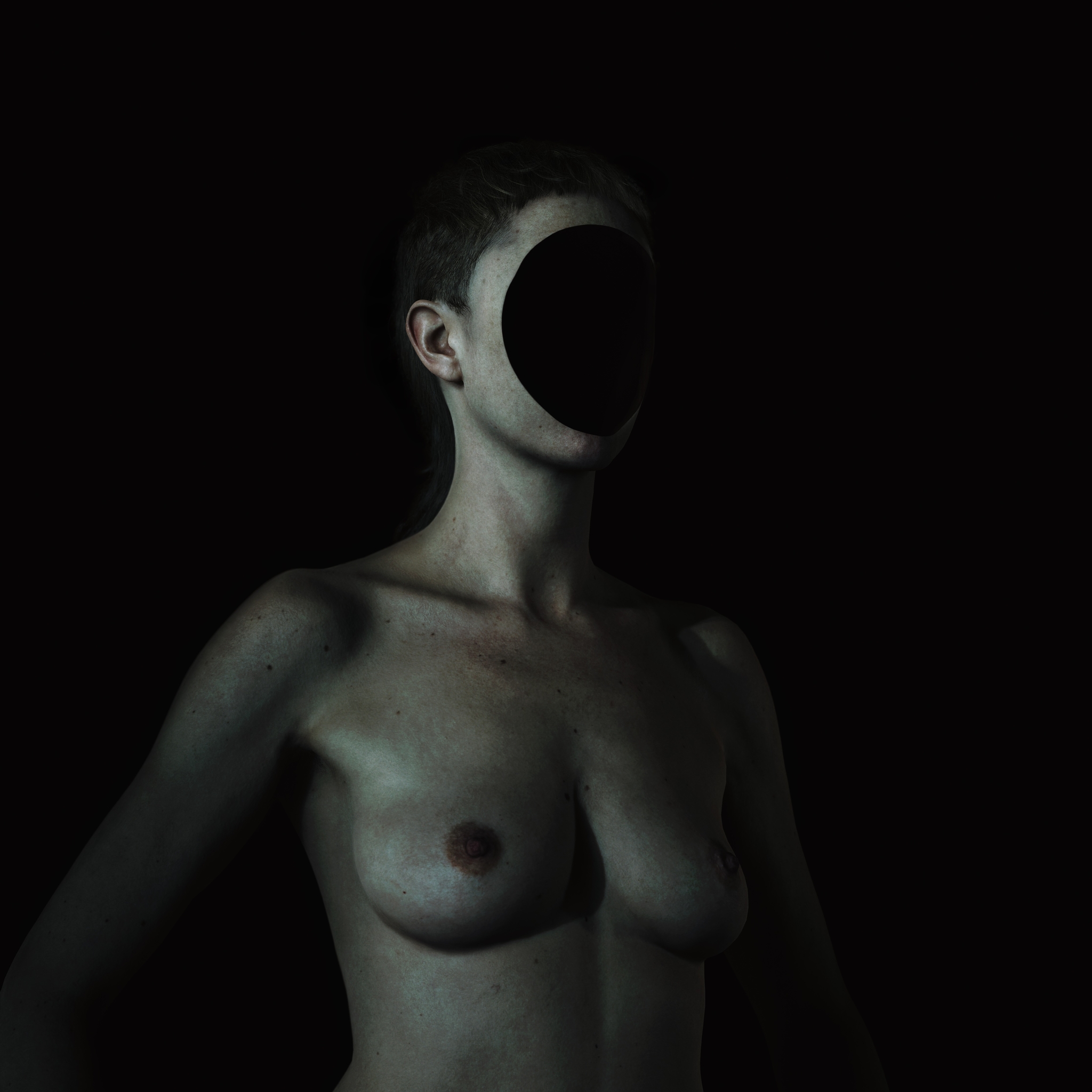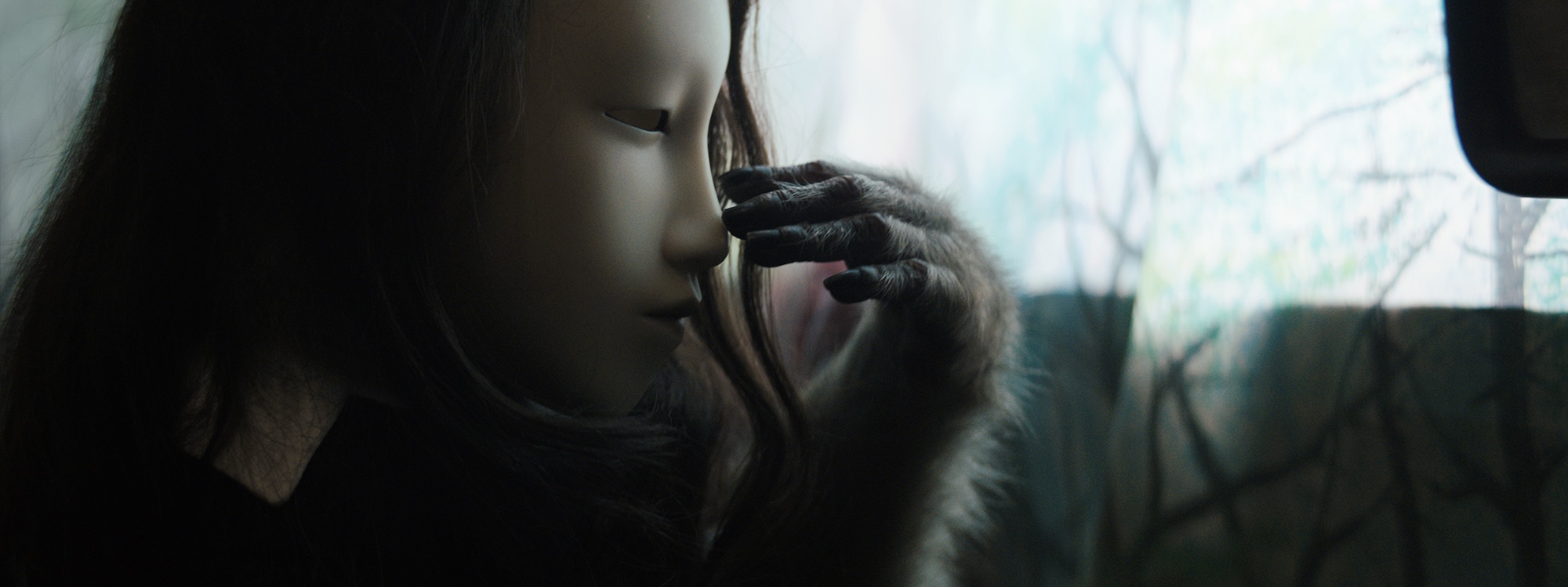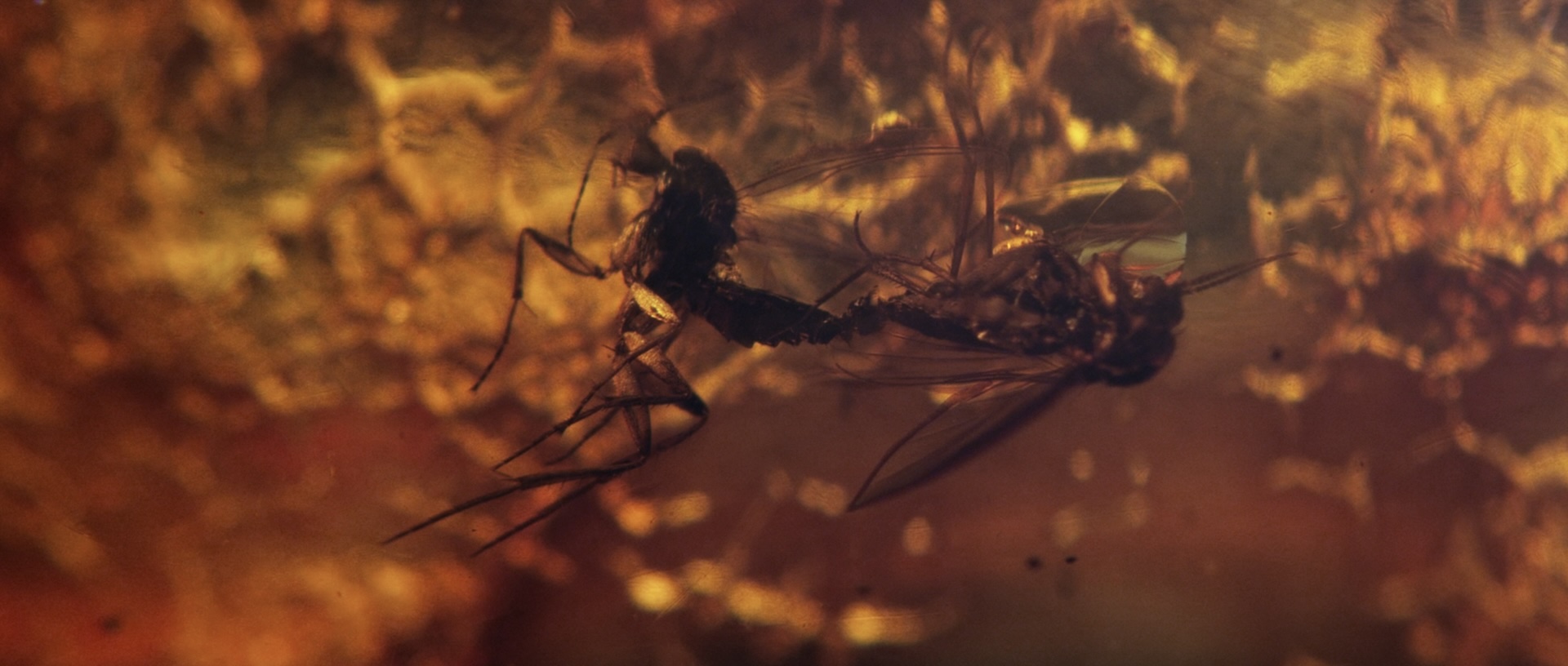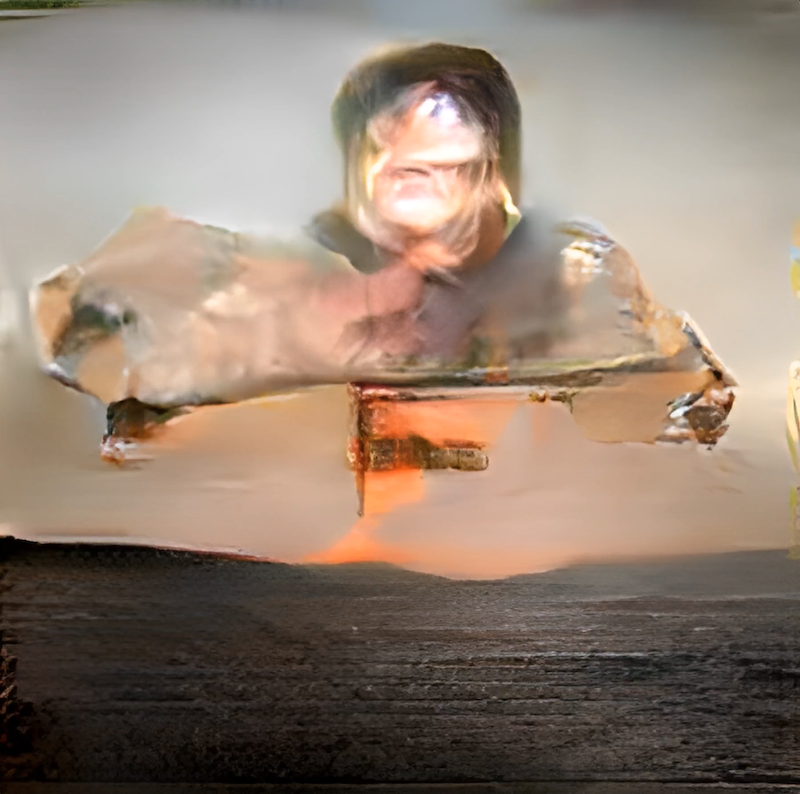Pierre Huyghe: Liminal

Letter to a friend —
another metaphysics is possible, without syntax or grammar
Dear friend, the last time I wrote to you I had just arrived from Paris. I told you about the Louvre exhibition, LES CHOSES: Une histoire de la nature morte. A year has passed since, a long time without sending any notice, prevented as I was by a vortex of exceeding tasks. Curiously, some works by a French artist that I had the opportunity to see in an exhibition running simultaneously with the Venice Biennale 2024—presented at the Punta Della Dogana Museum, formerly a customs building—led me to resume our correspondence. Although Foreigners Everywhere was the theme of the Biennale, it was almost exclusively in Liminal, Pierre Huyghe's individual exhibition, echoing some of the world's helplessness, that I found the resonance of Deleuze's words when, recalling Proust, he said that a writer is always a foreigner in his own language. This doesn't mean writers mix a new language with the native one, but that they put all linguistic forces into a minority that belongs only to each of them. This is the condition for a minor art, one that is capable of inscribing subjectivity on a transindividual scale.
Obscurity seems to organize the exhibition room away from a purely decorative immersive experience, from the mere creation of environments or the a-critical aestheticization of formalism. Rather, at given moments, these are dynamically labyrinthine spaces, of wandering and even dérive, in the Situationist tradition of the city without center. They resemble an expedition proposal, the invention of a no-knowledge zone among other possibilities that the artist himself has raised when asked for clarification on the topic of utopias. You already see, dear friend, that we can only apparently be led to the idea of Plato's Cave here, because, against any binarism that haunts the great Western metaphysical tradition, this exhibition summons up crossfires between vision and blindness, light and darkness, machine and body, and between all species and organisms, natural and artificial, endogenous and exogenous, the necessary and the contingent, the human and the non-human, day and night—ways of worldmaking, in the manner of Nelson Goodman, or, in the manner of Pierre Huyghe, and in his own words, possible worlds to invent: biosemiotic environments. The multiple seasons of the earth bring this proposal closer to the imagination of Fontenellle's Conversations on the Plurality of Worlds.
Slowly, I enter the first of several spaces that make up the project. An initially calm movement is required for night vision to adapt to the opaqueness of the room. Some shadows of suspense, performativity, potential interaction and processuality loom over us. The figure of a naked woman imposes itself. Liminal is the title of this film, like the exhibition itself. The film is based on a human form, generated by computers, in a LED screen, its gestures conditioned to the presence or absence of people in the room, as well as to specific conditions of light and even temperature. Such data is collected in real time by sensors and microphones distributed throughout, or by external stimuli interpreted by an AI into new information and modes of operation. Human and non-human entities thus collaborate in the construction of speculative situations. In a grand and inhospitable landscape—the Atacama desert—this abandoned humanoid reacts unpredictably, walking, moving away, observing its own hands, dragging itself around, like a body adrift. Between the absence of a face—in its place a vast black hole—and the infinitude of the horizon, there are reminiscences of Caspar David Friedrich's work. Whether within deserts or seas, the silence and sovereignty of the cosmos permeates the senses. Der Moench am Meer. The same isolation and melancholy, the same forces of nature, the same abyss. A great poetics of the sublime without the Kantian impotence of imagination, yet coated in that same ethical imperative. A woman lingers before the image of twilight. Or is that dusk? It's dark. Whatever. In the same space as Liminal, on the floor at the entrance to the exhibition, is Estelarium—the basalt cast of the impression of a pregnant woman's womb whose cavity reveals the proximity of birth. Life that, like magma, awaits contact with the outside world to make its face visible. What would these lives be, dear friend? The inexistence of the face I mentioned reminds me of a similar absence in the physiognomy of Magrittian characters. Here I transcribe Levinas' words so that one day we can return to them:
Immanquablement l’Autre me fait face -
hostile, ami, mon maître, mon élève –
à travers mon idée de l’Infini.
Perhaps other unprecedented sounds, known or imperceptible, unknown languages projected into space or generated by AI, as in Portal and Idiom, can be surprising forms of communication between the machine and the Cartesian res extensa. If, in Portal, the strangeness of an antenna that seems to come out of science fiction, surrounded as it is by paraphernalia, dialogues with a Soviet monument and produces information that surpasses our ability to understand it, in Idiom humans move around the totality of the exhibition wearing golden LED masks that, inside of them, hide embedded sensors, speakers and luminous signals. Dear friend, I must confess, it was this golden mask, partially covering the humanoid's head, plus their audible but incomprehensible sound modulations, that prevented me from tripping over the character of Idiom, so much was the confusion between the black form and the identically black background. Idiom, simultaneously a human figure and an incorporeal entity, contaminates the entire exhibition. Producing unintelligible phonetic phenomena, it evokes the great Artaudian call for a body without organs and without function, one that seeks the whole earth. Events and affiliations. Contagions. I don't use words and I don't even use letters—Artaud, who boils:
arganuftá
daponsidá
parganuft
ebanuft
parganupt
ebanupte
pelozipter.
palom
petomne
onme
nizá

Further masks, besides those of Idiom, can be found in the aptly-titled film Human Mask and in the aquarium of the installation Zoodram. During the former, a monkey, dressed as a girl with long hair, wears a white Noh theater mask and wanders through the chaos of a restaurant on the outskirts of Fukushima, where, as you will remember, a nuclear catastrophe took place in 2011. This peculiar creature moves anxiously around the place. It repeats pre-determined gestures, like those of the famous maneki-neko, the Japanese cat that symbolizes luck, mechanically and iteratively raising and lowering its paw. Between animal instinct and habit, there remains a faint representation of humanity. The mask that hides the face. The face and its mold. The aura. The main character. The original and the copy. Human and inhuman, more or less strange, more or less unknown. What does the word “animal” correspond to and where are each of us when we name it? Who and what do we speak for when we refer to it? I'm reminded of Derrida, who, in The Animal I Am, wrote about autobiography: “this is who I am; but who am I?”
In the aquarium, a replica of Brancusi's Sleeping Muse coexists with a hermit crab. I ask myself: what does it mean to be an ascetic today? How long does a muse last? How long does beauty last? How long does truth last? A crab and an austere life—mute and homely. In Ancient Greek theater, the mask, like a face in a movie close-up, allowed spectators to follow the unfolding action through its excessive expressions. It appeared when an actor's voice could not reach the entire audience. For this exhibition, the almost plain masks, with their subtle expressions, looked from the front and through the silence of their pose, become a perfect copy of infinite difference. This is what happens in photographs or when a text is entirely repeated. The encounter with the double is the encounter with death, Borges once said.
In the space of Zoodram, we can see other aquarium-companions—as I like to call them—Circadian Dilemma (El Dia Del Ojo), Abyssal Plane and Cambrian Explosion 19. The dim light and the technological apparatus act upon the transparent material, distorting, clouding and refocusing, enlarging and even impeding the view. As you can guess, dear friend, all elements in surrounding environment are possibilities for interfering with the functioning of the artworks. This effect runs transversally to the whole exhibition. Among the soft-shell crabs, anemones, starfishes, sand, rocks, living fossils, algae, soil, seeds, larvae, bacteria, fungi and other aquatic organisms, minerals and plants, the Mexican tetra was the one that most fascinated me. I don't want to bore you with descriptions, but just let me tell you that this is a species of fish that, due to its blindness, has altered its circadian rhythm, thus possessing a biological clock that is independent of the Earth's rotation. These fish (astyanax fasciatus mexicanus) live together in the aquarium with other tetras that can see, meaning that there are two circadian rhythms working simultaneously here—some fish are guided by the Earth's 24-hour schedule, some are not. Like the Mexican tetra and like Caspar David Friedrich's Der Wanderer über dem Nebelmeer: what do they see that we don't? What are they looking at? What does that faceless woman in Liminal see? What is this exhibition hiding from us? So many heartbeats, so many cycles, so many possibilities. Everything to see and everything to imagine. As in a forest, the play between what is shown and what is hidden becomes the measure of our lives.
The aquarium of Abyssal Plane contains a mixture of materials that have been deposited on the seabed of Marmara. In this work, resulting from a previous project (Abyssal Plane, Geometry of the Immortals), it is possible to identify half of a female figure, the lower part of the body. Starfishes coexist with the ruin of this fragment. Those living beings, through their simple physiognomy, with nervous systems spread through the body, the same vital organs in all of their arms and stem cells that enable them to indefinitely reconstitute eliminated organs, are perhaps the other missing half of that female figure, as the soul is to the body. Perhaps what we call History is nothing more than a starfish capable of eternal regeneration; we refer to it as past, present and future. Between illusion and the exhaustion of resources, we will always be open to the complex possibilities that surround us. And wasn't Marguerite Duras who said, in her film La Femme du Gange, that sand is time? Didn't Alain Resnais observe these mutilated traces that civilization leaves us, in the film The Statues Also Die, when he told us that after men die they enter history, and after statues die they enter art, and the botany of art is what we call culture?
As I walk through the singularly enigmatic exhibition, I come across the surprising Camata. This film, with no beginning nor end, cannot follow a linear structure, because the sensors placed in the exhibition space continuously produce changes in its montage. First, this prevents any possibility of closure; second, the work is edited in real time. From now on we will place the viewer inside the frame, we would say with the futurists. The images, filmed in the Atacama desert again, show us a human skeleton situated in a kind of circle, surrounded by machines positioned into distinct intentionalities. Robotic arms performing ritualized gestures. They verify, remove and replace objects alongside the skeleton. In this kind of cult of the dead, of the human in its condition of fossil, the machines act as analysts of the tragedy of a certain geological time, performing a macabre dance around a remnant, and reminding us that death and destiny have never ceased to coincide. The bones without flesh, the strangeness of the stripping, that is what, by visually imposing itself through the reduction to the most simple arrangement, makes it almost impossible to stop thinking of the fatality of mass extinction. The archaeology of our history. Death. Liminal.
Dear friend, the strength and struggle of the human condition is manifested again in Fortuna. Incorporating a fan, a wind sensor and a certain aroma, this installation configures the space that integrates the entire system of the exhibition project, like a heart pumping blood through the vessels of the circulatory system but also a lung that ensures breathing and oxygenates the blood. That work establishes a link with Bernardo Falcone's sculpture at the top of the Punta Della Dogana, which you may have seen already. It consists of two Atlanteans supporting the globe on which the figure of the goddess Fortuna (from Roman mythology) is placed with a weathervane symbolizing chance, uncertainty, luck, or hope. Such is our common destiny—as unpredictable as this exhibition. We don't know if the energy of the winds, its flowing, is going in a good or bad direction. Such are the things of the world. Mistakes, failures, a few horrors. Not giving up, even when you come back empty-handed. Love and fortune. Some poetry. Camões:
Erros meus, má fortuna, amor ardente
Em minha perdição se conjuram;
Os erros e a fortuna sobejaram,
Que para mim bastava amor somente.

Once again I come across one of Idiom's human performers when, in front of Offspring, we are confronted with the objectification of pure contingency and the unexpected. I believe, dear friend, you will appreciate the unruly analogy, but this artwork is my Ecstasy of Saint Teresa, my Berninian moment, a retreat for all senses. A rapture and suspension between heaven and earth. The visual-sonic display, made up of two rectangular metal structures placed under a low ceiling and containing multiple directed lights, produces a spectacular atmospheric effect, giving the installation a poetic theatricality. An AI program generates blue, red and white lights which, covered in a diffuse mist, try to synchronize with Erik Satie's Gymnopédies. Since the self-generating system continuously and permanently incorporates external circumstances, the results are always contingent, dependent on aleatory conditions. Unique and multiple, the work is a prayer dedicated to its spectators. The figures of ecstasy converted into fiction. Like Saint Teresa, dear friend, I swear I could see angels in the fog. Or were they arrows? Simplicity, rhythm and grace. Everything floats through time. Indeterminately.
In the next room, I see one of Idiom's human performers again and, with the film De-extinctio, I navigate through a million-year-old amber stone that preserves the debris of organisms, including two mosquitoes trapped during the mating phase. The camera's gaze is our gaze. Time and space, or: Michel Serres' radiant Biogeo—where we have always lived, before history, wars, cultures and languages drove us apart. In his words: air and water, without mouths or tongues, who will speak on their behalf? Who will represent earth and fire, the bees and the plants they pollinate? Financial power took over all forces and all living species, human and non-human. Relationships with nature, bodies, lives, communities and institutions have been transformed. As I think about the word “relationship” and how it makes it impossible to end anything at all, I am confronted, on a large screen, by images of UUmwelt-Annlee—modified, interrupted, continuously reconstructed in real time from the data obtained by the computer-brain interface and thus subject to each transformation in light, temperature, presence and movement, of humans and all other species that inhabit that locale. We watch an individual's cerebral activity imagining the fictional Annlee, a virtual model bought in 1999 by Pierre Huyghe and Philippe Parreno from a Japanese company. Dear friend, I was told these mental images generated by a computer are based on the brain activity of human beings who have learned to read. The way we imagine Annlee has been captured by a scanner, as if it was a magnetic resonance device that, in turn, reconstructed the images it obtained. The Cancer Variator incubator contains human cells affected by environmental changes that also interfere with the images from the previous work. In vitro cancer cells contribute to speeding up or slowing down their division. The visual representations, like metastases themselves, reproduce the pace of cellular division. Worlds that give birth to other worlds, lives that dream up other lives, complex intensities, order and disorder, instability and permanence.
I know this letter is already long, my friend, but I'd still like to tell you that the reason this exhibition program challenges us is due to its internal path, which calls for a relational space. It works just like all of us—living matter that emits, receives, stores and processes information. Deleuze and Guattari argued that there is no such thing as human or nature, but rather a process through which one thing is produced in the other. Everywhere we go, what we find is life, the earth-gravel that covers the ground, evoking similar landscapes—it's in the nature of things to return home, as Lucretius would say. The last two works I mentioned are installations accompanied by a strange figure that marks the end of the exhibition route. This is Mind's Eyes, which is the physical objectification of a mental image of UUmwelt-Annlee and close to the original image we are still able to grasp. It occurs to me, in good Hegelian fashion, that this hybrid set of biological and artificial materials constitutes the exteriorization of the spirit in the well-known idealist presupposition according to which all that is real is rational and all that is rational is real. In this case, however, there is no possible dialectical synthesis in sight. Only estrangement and otherness. To stay here and disturb time. The mysterious, shapeless creature, which seems to be crawling on the earth that covers the ground, this common surface, looks seduced by some melody that it listens to attentively. Like Ulysses enchanted by the sirens, it awaits the promise of a future that will soon repeat what it has experienced. As you can see, everything in this exhibition is on the edge. I and not-I, exterior and interior, mean nothing now. The limit is the very exhibition. This limit, our limit, the world's. To end this letter with an analogy to the intense Deleuzian formulations on language, I think there are still artists capable of making art become delirious. Here is Liminal: it makes us believe that another metaphysics is possible, without syntax or grammar. Just unknown idioms. To be invented.
Eduarda Neves Professor, essayist and independent curator. Her research and curatorial activity articulates the fields of art, philosophy, and politics.
Translation PT-ENG: Rômulo Moraes.
This work was funded by national funds through FCT - Fundação para a Ciência e a Tecnologia, I.P., within the projects UIDB/04041/2020 and UIDP/04041/2020 (Arnaldo Araújo Research Centre)

Pierre Huyghe, UUmwelt-Annlee, 2018. Photo: ©Pierre Huyghe - Kamitani Lab / Kyoto University and ATR. Courtesy of the artist, Marian Goodman Gallery, Esther Schipper, Hauser & Wirth, Galerie Chantal Crousel, Taro Nasu.
Pierre Huyghe, Liminal, 2024. Courtesy of the artist, Galerie Chantal Crousel, Marian Goodman Gallery, Hauser & Wirth, Esther Schipper e Taro Nasu.
Pierre Huyghe, Liminal, 2024, Portal, 2024, Courtesy of the artist and Galerie Chantal Crousel, Marian Goodman Gallery, Hauser & Wirth, Esther Schipper and TARO NASU; Idiom, 2024, Courtesy Leeum Museum of Art. Installation view, “Pierre Huyghe. Liminal”, 2024, Punta della Dogana, Venezia. Photo: Ola Rindal © Palazzo Grassi, Pinault Collection
Pierre Huyghe, Offspring, 2018, Pinault Collection;, Offspring, 2018, Courtesy Leeum Museum of Art. Installation view, “Pierre Huyghe. Liminal”, 2024, Punta della Dogana, Venezia. Photo: Ola Rindal © Palazzo Grassi, Pinault Collection
Pierre Huyghe, Mind’s Eyes, Courtesy of the artist and Galerie Chantal Crousel, Marian Goodman Gallery, Hauser & Wirth, Esther Schipper and TARO NASU
Pierre Huyghe, Abyssal Plane, 2015, Collezione La Gaia, Busca—Italia, Circadian Dilemma (el Dia del Ojo), 2017, Private Collection, Germany. Installation view, “Pierre Huyghe. Liminal”, 2024, Punta della Dogana, Venezia. Photo: Ola Rindal © Palazzo Grassi, Pinault Collection








